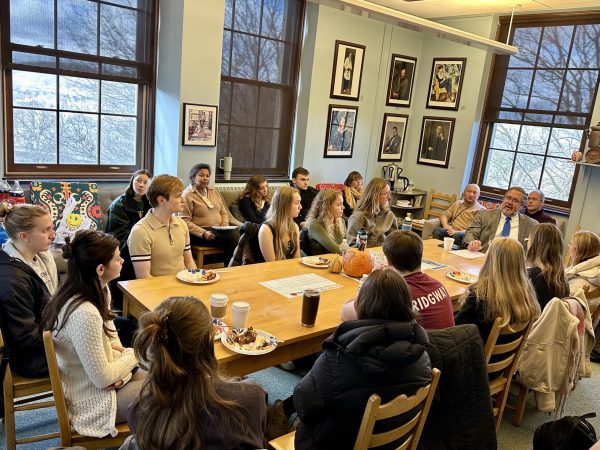Hamilton Plans to Manage Deer Overpopulation by Culling
On Tuesday, March 24, the Hamilton Deer Task Force continued its discussion of appropriate strategies to control deer overpopulation in town. The task force was formed six months ago and includes members from the Hamilton community and Colgate professors who have been able to advise the town leadership regarding the intractable issue of deer overpopulation. After months of research and debate, the decision was made that the town of Hamilton will apply to the state of New York for deer nuisance permits, allowing for the culling of deer.
Culling is a relatively new method of overpopulation control. It entails strategically shooting the deer so as to lower population levels to a desirable number. Associate Professor of Russian and Eurasian Studies and Environmental Studies Ian Helfant is a member of the Hamilton Deer Task Force, and he explained the important distinction that separates culling from hunting activities.
“This isn’t hunting; it’s culling. It’s reducing the population to sort of a desired, objective level that will reduce the concerns that people within the village have about deer overpopulation and that will reduce the impact upon habitat and that actually will make it a much better life for the deer that are left,” Helfant said.
The decision to cull the deer was not made lightly. The task force carefully considered other methods to effectively manage the deer overpopulation.
“We’re really emphasizing that this method [culling] has been tried in a few different communities, but it’s still fairly unusual. Other methods that people have suggested, not so much here but throughout the country, are relocation and sterilization, or even contraception. Those have been pretty demonstrably proven to be ineffective, particularly in a situation like this where you have a lot of surrounding deer habitats that are fully populated by deer,” Helfant said.
Associate Professor of Biology and Environmental Studies Catherine Cardelús is also a member of the Hamilton Deer Task Force. In the fall of 2013, her students focused their research to understand the extent to which the deer population in Hamilton is affecting the community and the environment.
“I had the opportunity through the Environmental Studies program to teach ENST 390, which is Community-based Study of Environmental Issues, which is a really amazing class, because it allows you to tackle things at the community level, to tackle big questions … We did over 1500 hours of research on deer in this course, looking at public perception, looking at their biology and then looking at the economics of it,” Cardelús said.
The impetus to act so immediately came, in part, from research Colgate students did under the guidance of Cardelús. It is currently unclear if Colgate students will continue to be active researchers and advisors if the culling takes place.
Helfant spoke about the detrimental impact deer overpopulation is having on the local environment.
“The two major concerns that have really come up from the biological perspective are the idea of forest regeneration and the idea of trying to reduce the incidence of Lyme disease,” Helfant said.
Senior Emilyann Keller had the opportunity in ENST 390 to research the implications of deer overpopulation.
“Deer are having drastic ecological impacts on the vegetation, and it’s not good. We weighed those impacts as [more immediate] than the actual deer killing … I personally researched diseases, like Lyme disease. The trend that I saw was that it was increasing as the deer population was increasing,” Keller said.
If Hamilton obtains the necessary permits to begin the cull, the deer that will be killed will not go to waste.
“Individual cullers will have the right to keep the venison, to keep the deer, but they will also have the ability if they should choose to share with acquaintances, or perhaps with villagers who signed up on a list that they would be willing to pay for the processing of the deer … We might be in a position where we’d be thinking about culling the deer and actually providing a sustainable source of meat that doesn’t involve a lot of the real downsides to mass meat production,” Helfant said.





